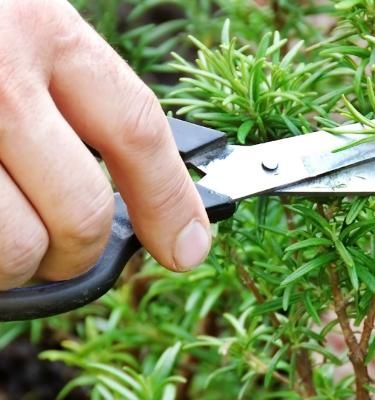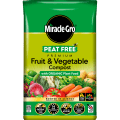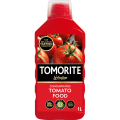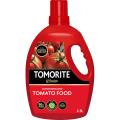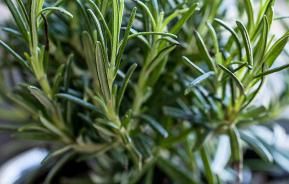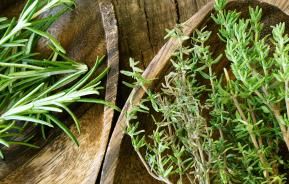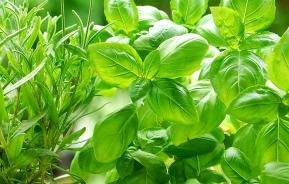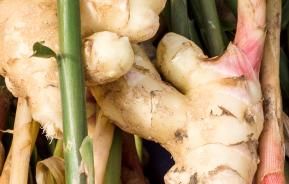Which herbs are right for me?
Many herbs prefer a sunny, sheltered site with free draining soil, especially the Mediterranean types like lavender, rosemary, sage, thyme and oregano. They can cope with our cold winters but what they do hate is a really wet winter. If you have heavy clay soil, then add good organic matter such as Levington Composted Bark to help open up the structure of the soil.
Shady spots
If you have a shadier garden or shady, damper spots, then you can successfully grow many of the annual and biennial herbs. Parsley, dill, coriander and mint are much happier in a cooler part of the garden and tend to bolt (run to seed) if they dry out and their leaves become bitter if scorched in the sun.
Patio and balconies
If you are limited on space, the good news is that nearly all herbs grow happily in containers, and many can be combined in the same pot to save space but also provide ingredients for a specific menu such as a pizza or a cocktail! Planting in containers also makes it extremely easy for you to pick them when you need them. Some herbs such as mint and lemon balm can be extremely invasive as they spread through runners and can be difficult to get rid of once they take hold. Always plant these in a large pot on a hard surface so their roots can’t escape.
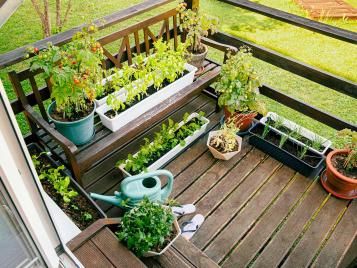
Designing your herb garden
Whether you want your herbs for ornamental reasons, as an ingredient or both, it’s always best to plan where they are going to go. Rule of thumb has been to plant herbs next to the kitchen door but if that area is always shady then many herbs will not be happy there. Always think of harvesting when planting, if you are someone who uses lots of rosemary then ideally you want them at the front of a bed or border or in a container that is easily accessible. Best not to be trampling on other plants to try and get to what’s needed.
Raised beds, especially built for herbs can work well on a big or small scale. You can have them dedicated to mediterranean types, situated in full sun or a shadier spot to grow your annuals such as parsley, basil, and coriander. You can then add the right type of growing medium to the bed for instant success depending on the type of herb you want to grow in them. Plant smaller shrub forms in rows to create an informal hedge and then have taller varieties such as fennel and verbena in drifts through the middle of the bed.
Planting in the garden
Many of the evergreen, shrub types herbs are best bought as ready grown plants rather than grown from seed. Make sure the area is weed free and loosely forked over and water the plant in its pot before planting out. Dig a hole the same depth as the root ball of the plant but twice as wide.
Squeeze the sides of the pot to help the plant out, and gently tease the roots out if they are congested. Place in the hole making sure the stem is at the same level as it was in the pot then simply fill the hole in with a good quality compost, gently firm in with your hands and water in well to help the roots settle.
Tip: it’s easy to think that because Mediterranean herbs like dry, sunny spots, then they won’t need much watering. This is true once they are established, but in their first season after planting, they must not be allowed to dry out so do keep on top of watering, especially during a hot, dry summer.
Planting in pots and containers
Nearly all herbs do well in pots and containers, so whatever space you have you can always have room for a pot of herbs.
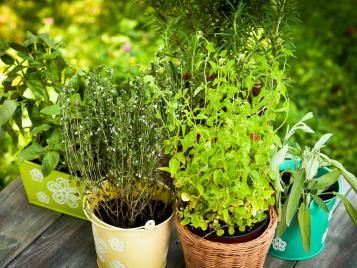
Types of containers
Herbs tend to do well in all sorts of pots from plastic, metal, wooden and glazed however mediterranean herbs benefit from being grown in a porous material such as terracotta as this stops them getting waterlogged. If you are going for a modern look, then galvanised metal is a good choice but always line it with plastic such as an old compost bag with holes poked into the bottom as this stops the plant from getting too hot.
Make sure the container has drainage holes and then add some form of crock (broken pots to put in the bottom) to cover (but not plug) the holes. Half fill the container with a good quality peat free compost right for the type of herb. For Mediterranean herbs type-specific compost will provide the right drainage and for others, especially annuals then use an all purpose peat free compost. Gently ease the plant out of its pot, teasing out the roots if needed. Place in the container and then fill the rest of the pot with your chosen compost being careful to leave at least 5 cm of the top to stop water running off the surface. Place the container in its permanent position before watering and then water the whole container to help roots settle.
Tip: for evergreen herbs growing in containers, add pot feet to the bottom of the container or place on small bricks etc to prevent waterlogging in the winter.
Sowing from seed
Many annual herbs grow very easily from seed such as basil and coriander. Fill pots or seed trays with a seed sowing compost and press down lightly. Water with tap water using a fine rose on your watering can and allow to drain. Sow the seed thinly (basil seeds are tiny and brown so gently tap them through the crease in your palm). Watch this video for more information on growing basil.
Cover lightly with more compost and very gently, with the back of your hand, firm them down to ensure good compost contact. Place a see through cover over the top to keep in moisture and warmth and place on a warm windowsill. As soon as germination occurs, remove the covering.
Pot up into 5cm pots once they have at least 2 sets of true leaves and start to harden off once all risk of frost has passed before planting outside. Alternatively, you can sow direct outside in late May where they are to grow and then keep sowing new seeds every 2 weeks for a successional crop.
Tip: if you buy plants like basil, parsley and coriander from supermarkets, then you can easily create more young plants by gently dividing them and placing each section into its own pot. Not only have you got plants for free, but these will now last a lot longer than if you had just kept them in 1 pot!
After care
Beds and borders
Keep weed free and watered till established. Cut back sage, rosemary, and tarragon in the spring to prevent them from getting straggly. Continually harvest annual herbs like coriander, mint, and basil to stop them going to seed. For herbs that you are using as cut and come again types give them a liquid feed to keep them producing healthy and tasty leaves.
Pots and containers
Keep watering especially during dry spells and boost annuals with a fortnightly liquid feed.
For herbs such as rosemary, thyme and sage then use a tomato feed monthly till October to help toughen them up to withstand the winter weather. When the weather starts to cool then group pots together closer to the house or a wall to help protect them. Tender herbs such as lemon verbena and some sages will need to be brought under cover.
Tip: some shrubby herbs can be short lived so have a go at taking cuttings from plants such as rosemary and lavender in the early summer to ensure you will always have new plants.
